ปีพ.ศ.2559

An Analysis of the Relationship of Social Application Usage on Academic Achievement of Nursing Students, Siam University (2016)
Title : An Analysis of the Relationship of Social Application Usage on Academic Achievement of Nursing Students, Siam University
Researcher : Assist. Prof. Dr. Jaratdao Reynolds, Assist. Prof. Dr. Orntipa Songsiri and Assist. Prof. Dr. Somrudee Chenkitiyanon
Department : Faculty of Nursing, Siam University, Bangkok, Thailand
E-mail : jaratdao@gmail.com
Abstract : As we enter the 21st century, social application/networking is being used by an increasing portion of world’s population, especially adolescents and young adult on a day- to-day regular activities. Students are increasingly uses these social application /networks for both academic and non-academic reasons. However, the use of this social application has led to debate over whether or not it has impacted on students’ life as well as their academic achievement. Some studies identified that social application/networking may be the tool used in helping to develop and enhance students’ skill required for 21st century (Tuan and tu,2013). Therefore, this study was aimed to explore the relationship of social application usage among nursing students on their academic performance (GPAs). It took into account on how students participated on socialn application, time invested by students on social application, frequency of usage and the purposes of usage. The study was a cross-sectional survey, using the developed questionnaire. The data was collected from 272 students in the second and fourth year of nursing program, Siam University during the academic year 2014-2015. The data were statistically analyzed by calculating percentage, mean, standard deviation, and Pearson correlation analysis. Results indicated that all of the nursing students were using at least one form of social application. For the use of social applications, it was obviously that, Facebook and Line were the most popular social application students used (100%), followed by google (89.7%) and instragram (57.57%).Results of frequency of usage indicated that 98.16 percent of students visited a social application/networking several times a day. In term of the purposed for using the social applications, they were varied. Even though students generally use social application for academic purposes; they also use it for nonacademic matters .For non academic purposed, the results shown that 94.12 percent of students reported used the social applications for communication with friends and family, and 72.80 percent reported they used for entertainment when they felt bored. Additional reasons reported included companionship (47.06%), and making friends (27.21%). For academic purposed, searching for information was the most reason students used (77.95%), followed by learning and sharing resources (66.91%), exchange ideas and discussion (48.16%) and professional networking (36.03%) respectively. The finding of this study found negative correlations between time spent on social application usage with students’ GPAs. In other words, GPAs decreased as the amount of time spent on social application usage. The purposes of usage was also shown to be significantly correlated with students’ GPAs. The students who use social application for academic purposes seem to earned better GPAs.Therefore, in the light of globalization and the information age, integration of these social application in students’ life is unavoidable,however findingmiddle ground has become a challenge.
Proceeding : การประชุมวิชาการระดับชาติ สมาคมสถาบันอุดมศึกษาเอกชนแห่งประเทศไทย ประจำปี 2559 วันที่ 26 พฤษภาคม 2559 มหาวิทยาลัยภาคตะวันออกเฉียงเหนือ APHEIT Conference 2016
Link to Proceeding: http://apheitconference.siam.edu/index.php/en/proceedings-2012-2016
Bibliography : Jaratdao Reynolds, Orntipa Songsiri & Somrudee Chenkitiyanon. (2016). An analysis of the relationship of social application usage on academic achievement of nursing students, Siam University. In Proceedings of Conference 2016 (pp. 170-171). Khon Kaen: North Eastern University.

Applying Correlation Analysis and Tam for Determining Relationship Between Two Variables
Title : Applying Correlation Analysis and Tam for Determining Relationship Between Two Variables
Researcher : Pitchayakorn Lake พิชญากร เลค
Department : Faculty of Information Technology, Siam University, Bangkok, Thailand
E-mail : pitchayakorn@siam.edu
Abstract : Future scenarios of political, economics and education sectors will depend on the contributions of students. The twenty-first century educator is a visionary. Teachers see the potential in the emerging tools and technology innovations in order to manipulate them to serve student’s needs. The universities across the world have incorporated in learning systems. The success of educator requires an extensive understanding of technology innovations. Educational innovations will be effective if they research on educational technology i.e. technology-learning process and technology in using hardware and software. The research use TAM in order to stimulate to learn more.
The objective of this research is to study the relationship between two variables of Information Technology and Computer for Studies and Works by using correlation analysis. Data collection were obtained from 284 respondents with the mean of 406.6 on MS. Word and SD. is 291.9. The mean on MS. Excel is 291.9 and SD. is 313.8. The students who got MS. Word scores better on average than MS. Excel scores. Out of the 284 respondents 128 (45.1%) were male and 156 (54.9%) were female. The result shows that correlations coefficient is 0.749. The coefficient is calculated by taking the covariance of the two variable. The students who got MS. Word and MS. Excel scores, were linear correlated statistically significant at 0.05 (F=360.63, p = 0.000). The researcher used variable of MS. Word scores as a predictor, which can predict 56.1% of MS. Excel scores. The regression equation is MS. Word = 131.718 + 0.942 (MS. Excel).
Keywords : Information Technology, Computer for Studies and Works, Correlation Analysis
Proceeding : การประชุมวิชาการระดับชาติ สมาคมสถาบันอุดมศึกษาเอกชนแห่งประเทศไทย ประจำปี 2559 วันที่ 26 พฤษภาคม 2559 มหาวิทยาลัยภาคตะวันออกเฉียงเหนือ APHEIT Conference 2016
Link to Proceeding: http://apheitconference.siam.edu/index.php/en/proceedings-2012-2016
Bibliography : Pitchayakorn Lake. (2016). Applying correlation analysis and tam for determining relationship between two variables. In Proceedings of APHEIT Conference 2016 (pp. 139). Khon Kaen: North Eastern University.
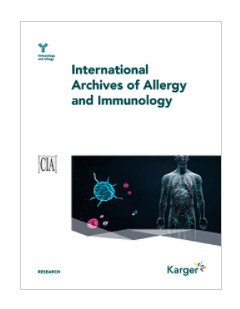
Blood Coagulation and Asthma Exacerbation in Children (2016)
Title : Blood Coagulation and Asthma Exacerbation in Children
Researcher : Clin.Prof.Suwat Benjaponpitak
Department : Faculty of Medicine, Siam University, Bangkok, Thailand
E-mail : med@siam.edu
Abstract : Background: Recent studies have demonstrated the activation of coagulation pathways in asthmatic airways. This study aimed to determine systemic blood coagulation during asthma exacerbation compared with the stable state in children.
Methods: Pediatric patients (aged between 5 and 15 years) suffering from asthma exacerbation were enrolled. von Willebrand factor (vWF), plasminogen activator inhibitor type-1 (PAI-1), protein C, D-dimer, prothrombin fragment 1 + 2 (F1 + 2), thrombin-antithrombin complex (TAT), and C-reactive protein (CRP) levels were measured during asthma exacerbation and stable state.
Results: A total of 22 patients were enrolled. The median vWF, PAI-1, and CRP during asthma exacerbation were significantly higher than those of the stable state: 147.5% (interquartile range, IQR: 111.05-196.57) versus 94% (IQR: 69.72-109.62, p < 0.001), 41.9 ng/ml (IQR: 21.91-48.61) versus 26.17 ng/ml (IQR: 15.89-34.44, p < 0.03), and 4.46 mg/l (IQR: 2.15-16.23) versus 0.87 mg/l (IQR: 0.20-3.89, p < 0.015), respectively. However, the median protein C during asthma exacerbation was significantly lower than that of the stable state: 99.5% (IQR: 86.75-117) versus 113% (IQR: 94-115.25), p = 0.01. No significant difference was found between the levels of D-dimer, F1 + 2, and TAT during asthma exacerbation and stable state. Ultimately, D-dimer was positively correlated with asthma exacerbation score (R = 0.466, p = 0.027). A significant correlation was observed between vWF and CRP (R = 0.527, p = 0.012).
Conclusion: Evidence was found of increased endothelial activation and increased PAI-1 during asthma exacerbation. This may emphasize the potential role of blood coagulation in asthma exacerbation.
Link to Academic article: https://www.karger.com/Article/FullText/446775
Journal : International Archives of Allergy and Immunology Vol. 170, No. 2, 2016
Bibliography : Manuyakorn, W., Mairiang, D., Sirachainan, N., Kadegasem, P., Kamchaisatian, W., Benjaponpitak, S., & Chuansumrit, A. (2016). Blood coagulation and asthma exacerbation in children. Int Arch Allergy Immunol, 170(2), 75-83. doi: 10.1159/000446775.
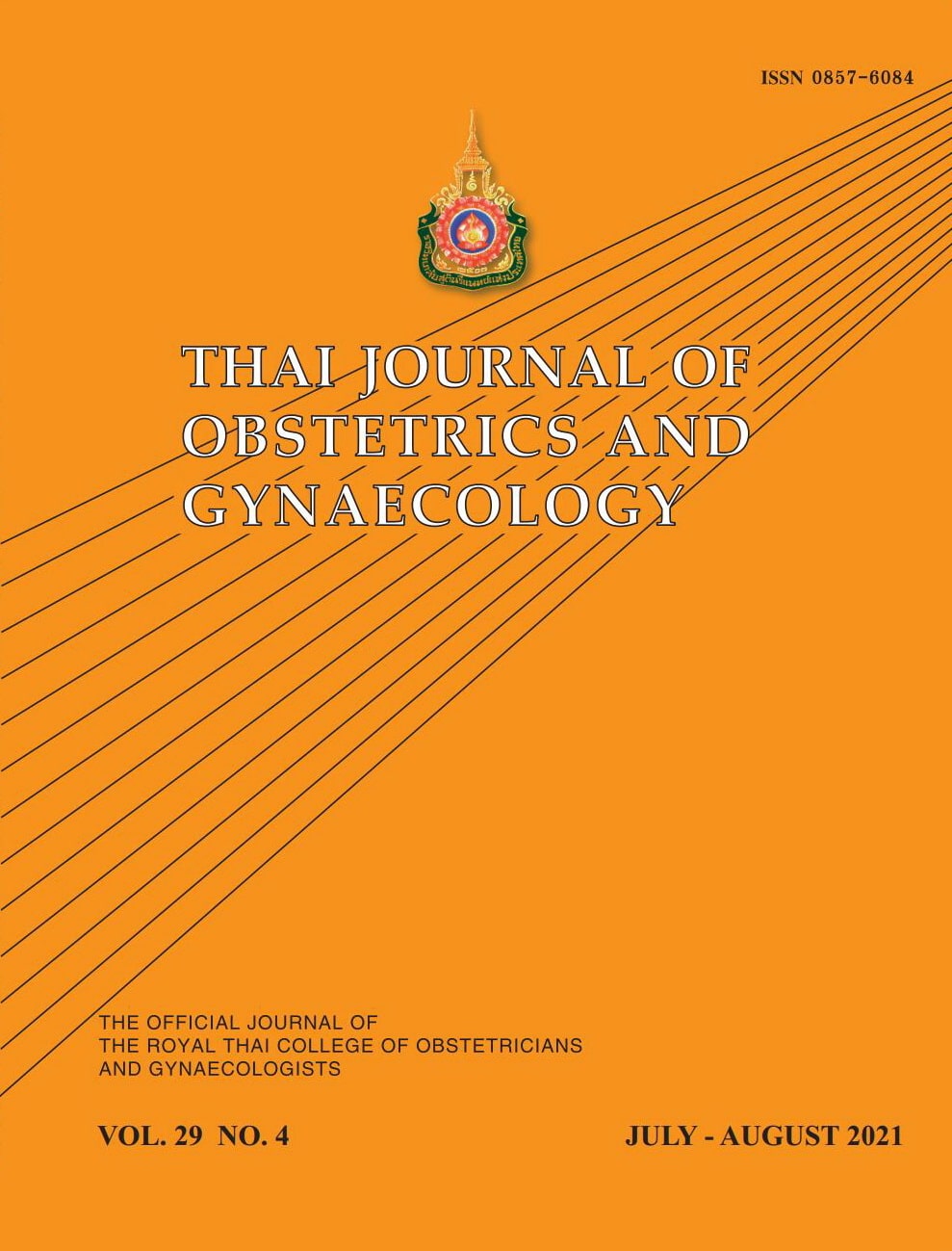
Cesarean section rate based on the robson 10-group classification at Rajavithi Hospital from 2015-2018 (2021)
Title : Cesarean section rate based on the robson 10-group classification at Rajavithi Hospital from 2015-2018
Researcher : Khornwong, S., Kovavisarach, E.,
Abstract : Objectives: To analyze cesarean section (CS) rates based on the Robson 10-group classification system (TGCS) and to examine the trends of cesarean section rates at Rajavithi Hospital (RH) between 2015 and 2018.
Materials and Methods: This cross-sectional study included all deliveries in RH between 1st January, 2015 and 31st December, 2018. The TGCS was used to categorize cesarean deliveries and all data collected.
Results: A total of 19,840 deliveries were analyzed. The annual CS rates were 35.5% (1710/4813), 36.6% (1809/4949), 35.2% (1836/5223) and 34.8% (1689/4855) in 2015, 2016, 2017 and 2018, respectively. The trend of the CS rates in each group and that of relative and absolute contributions were similar within the study period (p = 0.290). Group 1, 3 and 10 accounted for almost 70% of the study population and multiparous women with previous CS in (30.8%, 32.6%, 31.9% and 31.9%; p = 0.718), followed by group 2 (17.5%, 18%, 18.9% and 17.9%; p = 0.506) and group 1 (16.1%, 16.8%, 14.4% and 15.2%; p = 0.211), respectively.
Conclusion: The overall CS rate during the four-year period 2015-2018 varied between 34.8% and 36.6%, and the highest relative and absolute contribution to the overall CS rate at.
Keywords: Cesarean section rate The Robson 10-group classification Rajavithi Hospital
Link to Academic article: DOI: https://doi.org/10.14456/tjog.2021.23
Journal : Thai Journal of Obstetrics and Gynaecology, 2021, 29(4).
Bibliography : Khornwong, S., & Kovavisarach, E., (2021). Cesarean section rate based on the robson 10-group classification at Rajavithi Hospital from 2015-2018. Thai Journal of Obstetrics and Gynaecology, 29(4), 191–197.

Clinical practice guideline for diagnosis and management of urticaria (2016)
Title : Clinical practice guideline for diagnosis and management of urticaria
Researcher : Clin.Prof.Suwat Benjaponpitak
Department : Faculty of Medicine, Siam University, Bangkok, Thailand
E-mail : med@siam.edu
Abstract : Urticaria is a common skin condition that can compromise quality of life and may affect individual performance at work or school. Remission is common in majority of patients with acute spontaneous urticaria (ASU); however, in chronic cases, less than 50% had remission. Angioedema either alone or with urticaria is associated with a much lower remission rate. Proper investigation and treatment is thus required. This guideline, a joint development of the Dermatological Society of Thailand, the Allergy, Asthma, and Immunology Association of Thailand and the Pediatric Dermatological Society of Thailand, is graded and recommended based on published evidence and expert opinion. With simple algorithms, it is aimed to help guiding both adult and pediatric physicians to better managing patients who have urticaria with/without angioedema. Like other recent guideline, urticaria is classified into spontaneous versus inducible types. Patients present with angioedema or angioedema alone, drug association should be excluded, acetyl esterase inhibitors (ACEIs) and non-steroidal anti-inflammatory drugs (NSAIDs) in particular. Routine laboratory investigation is not cost-effective in chronic spontaneous urticaria (CSU), unless patients have clinical suggesting autoimmune diseases. Non-sedating H1-antihistamine is the first-line treatment for 2-4 weeks; if urticaria was not controlled, increasing the dose up to 4 times is recommended. Sedating first-generation antihistamines have not been proven more advantage than non-sedating antihistamines. The only strong evidence-based alternative regimen for CSU is an anti-IgE: omalizumab; due to very high cost it however might not be accessible in low-middle income countries. Non-pharmacotherapeutic means to minimize hyper-responsive skin are also important and recommended, such as prevention skin from drying, avoidance of hot shower, scrubbing, and excessive sun exposure.
Link to Academic article: https://pubmed.ncbi.nlm.nih.gov/27690471/
Journal : Asian Pacific journal of allergy and immunology Volume 34 Number 3 September 2016
Bibliography : Kulthanan, K., Tuchinda, P., Chularojanamontri, L., Chanyachailert, P., Korkij, W., Chunharas, A., Wananukul, S., Limpongsanurak, W., Benjaponpitak, S., Wisuthsarewong, W., Aunhachoke, K., Wessagowit, V., Chatchatee, P., Wattanakrai, P., Jirapongsananuruk, O., Klaewsongkram, J., Noppakun, N., Vichyanond, P., Suthipinittharm, P., Ruxrungtham, K., Singalavanija, S., & Ngamphaiboon, J. (2016). Clinical practice guideline for diagnosis and management of urticaria. Asian Pac J Allergy Immunol, 34(3), 190-200.
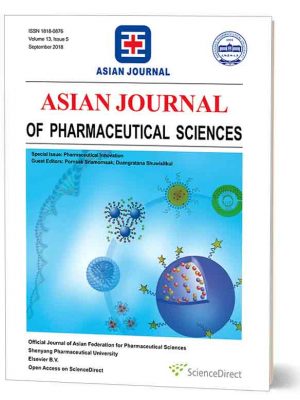
Determination of mono-, di-, and trilaurin in modified coconut oil using HPLC–ELSD (2016)
Abstract
Modified coconut oil (MCO) enriched with monolaurin (ML) was prepared by the glycerolysis of coconut oil [1]. Glycerolysis converts dilaurin (DL) and trilaurin (TL) into ML, the lauric acidmonoglyceride. ML has been found to have antiviral, antibacterial and antifungal activities[2]. According to the antimicrobial activity, the glyceride composition of MCO was determined. The concentrations of ML, DL, and TL in MCO were analyzed using high-performance liquid chromatography–evaporative light scattering detector (HPLC–ELSD).
The HPLC–ELSD analyses were performed using an HPLC 1200 series equipped with an ELSD and a ZORBAX Eclipse Plus C18 column (4.6 × 250 mm, 5 µm) from Agilent Technologies Inc. The mobile phase consisted of 0.01% (v/v) acetic acid in acetonitrile(solvent A) and acetone (solvent B) and was degassed by ultrasonic bath prior to use. The HPLC column temperature was 25 °C. The mobile phase was maintained at a flow rate of 1.0 ml/min with the following gradient condition: solvent A:solvent B (90:10 v/v) from 0 to 5 min to solvent A:solvent B (70:30 v/v) from 5 to 10 min to solvent A:solvent B (50:50 v/v) from 10 to 15 min to solvent A:solvent B (30:70 v/v) from 15 to 20 min to solvent A:solvent B (20:80 v/v), and then held for 10 min. The equilibration time between runs was 10 min and the injection volume used was 10 µl. The temperature of the nebulization was set at 40 °C and nitrogen gas was 3.5 bar.
The ELSD were capable of a linear response (R2 > 0.9995) independent of individual glyceride molecular structures at concentrations between ~0.02 and 0.40 mg/ml. Intra- and inter-day reproducibility (n = 5) were evaluated under the optimized conditions. The relative standard deviations for glycerides were less than 2.45%. The detection limits (LODs) and the quantification limits (LOQs) were lower than 0.054 and 0.162 mg/ml, respectively. The efficiency of this method, measured through the recoveries, was higher than 96.06%. The elution order of the standards was ML < DL < TL as shown in Fig. 1. The DL and TL standards eluted after the ML standard, indicating that the hydroxyl moiety on the glycerol backbone contributed significantly to retention. The concentrations of ML, DL, and TL of MCO derived from various conditions of glycerolysis were in the ranges of 102.70–247.25 mg/ml (ML), 52.65–79.87 mg/ml (DL), and 12.27–39.60 mg/ml (TL).
Keywords: Monolaurin, Dilaurin, Trilaurin, Modified coconut oil, HPLC–ELSD
Link to Publication: https://www.sciencedirect.com/science/article/pii/S1818087615001889
Bibliography : Juthaporn Ponphaiboon, Sirikarn Pengon, Amornrat Chaidedgumjorn, Sontaya Limmatvapirat and Chutima Limmatvapirat. (2016). Determination of mono-, di-, and trilaurin in modified coconut oil using HPLC–ELSD. Asian Journal of Pharmaceutical Sciences, 11(1), 223-224. (conference abstract).
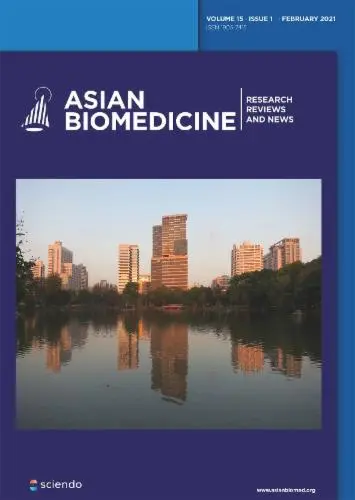
Determining safe entry sites for filler injections on the lateral canthal vertical line: Anatomical study of the midface arterial perforators in soft embalmed cadavers (2016)
Title : Determining safe entry sites for filler injections on the lateral canthal vertical line: Anatomical study of the midface arterial perforators in soft embalmed cadavers
Researcher : Rungsawang, C., Tansatit, T., Phumyoo, T., Jitaree, B., Uruwan, S.
Abstract : Background: Filler injections are frequently associated with vascular complications.Objectives: To investigate the course and location of the middle-midface perforators to establish safe cannulaentry sites for filler injections.Methods: The middle-midface was studied using 28 hemiface specimens from soft embalmed Thai cadavers atthe Faculty of Medicine, Chulalongkorn University. Investigations were performed following injection of red latex.Results: Middle-midface perforators were classified into 3 groups according to their origin. These perforatorsoriginated from the buccal branch of the facial artery (57%); the parotid artery (25%); or directly from the facialartery (18%). The distance between the buccal artery perforator (level with the upper alar crease) and the lateralcanthal (Y axis) line was 2.6 (SD 6.0) mm and Frankfort’s horizontal (X axis) lines was −16.4 (5.4) mm. The distancebetween the parotid artery perforator and the lateral canthal vertical line was 4.2 (10.8) mm and Frankfort’shorizontal line was −13.9 (3.4) mm. The distance between the facial artery perforator and the lateral canthal verticalline was 11.2 (10.8) and Frankfort’s horizontal line was –16.0 (5.3) mm.Conclusions: A single long perforator was identified along the lateral canthal vertical line. This most commonlyoriginated from the buccal branch emerging from the facial artery. Therefore, we recommend a cannula be insertedat the Beut site 2 cm inferolateral to the lateral canthus. This injection site is recommended as a safe to avoidinjury to the middle-midface perforato
Keywords: Facial artery perforator, filler injection technique, injectable filler complications, midface volumizati
Link to Academic article: https://sciendo.com/article/10.5372/1905-7415.1006.532
Journal : Asian Biomedicine, 2016, 10(6),
Bibliography : Rungsawang, C., Tansatit, T., Phumyoo, T., Jitaree, B., & Uruwan, S. (2016). Determining safe entry sites for filler injections on the lateral canthal vertical line: Anatomical study of the midface arterial perforators in soft embalmed cadavers. Asian Biomedicine, 10(6), 619–625.

Effects of coconut (Cocos nucifera L.) protein hydrolysates obtained from enzymatic hydrolysis on the stability and rheological properties of oil-in-water emulsions (2016)
Title : Effects of coconut (Cocos nucifera L.) protein hydrolysates obtained from enzymatic hydrolysis on the stability and rheological properties of oil-in-water emulsions
Researcher : Thaiphanit, S., Schleining, G., Anprung, P.,
Department : ภาควิชาเทคโนโลยีการอาหาร คณะวิทยาศาสตร์ มหาวิทยาลัยสยาม
E-mail : somruedee.tha@siam.edu
ฐานข้อมูลงานวิจัย มหาวิทยาลัยสยาม: –
Link to article: Food Hydrocolloids, 2016, 60, pp. 252–264. https://doi.org/10.1016/j.foodhyd.2016.03.035
Journal : Food Hydrocolloids / in Scopus
Bibliography : Thaiphanit, S., Schleining, G., & Anprung, P. (2016). Effects of coconut (Cocos nucifera L.) protein hydrolysates obtained from enzymatic hydrolysis on the stability and rheological properties of oil-in-water emulsions. Food Hydrocolloids, 60, 252–264. https://doi.org/10.1016/j.foodhyd.2016.03.035

Physicochemical and emulsion properties of edible protein concentrate from coconut (Cocos nucifera L.) processing by-products and the influence of heat treatment (2016)
Title : Physicochemical and emulsion properties of edible protein concentrate from coconut (Cocos nucifera L.) processing by-products and the influence of heat treatment
Researcher : Thaiphanit, S., Anprung, P.,
Department : ภาควิชาเทคโนโลยีการอาหาร คณะวิทยาศาสตร์ มหาวิทยาลัยสยาม
E-mail : somruedee.tha@siam.edu
ฐานข้อมูลงานวิจัย มหาวิทยาลัยสยาม: –
Link to article: Food Hydrocolloids, 2016, 52, pp. 756–765. https://doi.org/10.1016/j.foodhyd.2015.08.017
Journal : Food Hydrocolloids / in Scopus
Bibliography : Thaiphanit, S. & Anprung, P. (2016). Physicochemical and emulsion properties of edible protein concentrate from coconut (Cocos nucifera L.) processing by-products and the influence of heat treatment. Food Hydrocolloids, 52, 756–765. https://doi.org/10.1016/j.foodhyd.2015.08.017
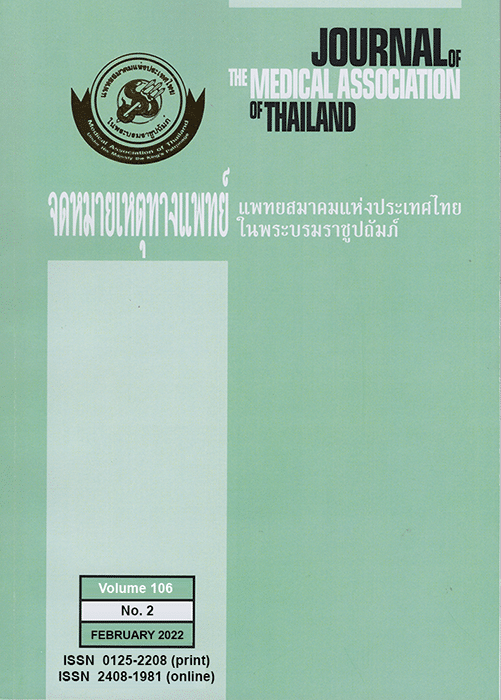
Presence of sperm in pre-ejaculatory fluid of healthy males (2016)
Title : Presence of sperm in pre-ejaculatory fluid of healthy males
Researcher : Kovavisarach, E., Lorthanawanich, S., Muangsamran, P.
Abstract : Background: Coitus interruptus, a common contraceptive method, has a high failure rate. Two reasons have been proposed for this: delayed withdrawal after ejaculation and presence of sperm in the pre-ejaculatory fluid.
Objective: To determine whether sperm was present in the pre-ejaculatory fluid of healthy males.
Material and Method: A total of 42 healthy Thai men were enrolled in the study between August 1, 2009 and November 30, 2009 at the Department of Obstetrics and Gynecology, Rajavithi Hospital. They were asked to collect pre-ejaculatory fluid smears in two glass slides and then deposit a semen sample in a plastic bottle after masturbation. Microscopic examination of wet and air-dried preparations and routine semen analyses were done consecutively in the human genetics laboratory.
Results: Actively mobile sperm were found in 16.7% (7/42 cases) of the pre-ejaculatory penile secretions of subjects whose sperm counts were 2 in 2 cases, 3 in 3 cases and 4 per high power field in the other 2 cases of positive sperm. Semen analyses were normal in 41/42 volunteers (97.6%); there was one case of oligospermia (14×106/ml).
Conclusion: Actively mobile sperm were discovered in the pre-ejaculatory fluid of 16.7% of healthy men.
Keywords: Coitus interruptus, Sperm, Pre-ejaculatory fluid, Thai male
Link to Academic article: http://www.jmatonline.com/index.php/jmat/article/view/7010
Journal : Journal of the Medical Association of Thailand, 2016, 99(Suppl. 2)
Bibliography : Kovavisarach, E., Lorthanawanich, S., & Muangsamran, P. (2016).Presence of sperm in pre-ejaculatory fluid of healthy males. Journal of the Medical Association of Thailand, 99(Suppl. 2), S38–S41.